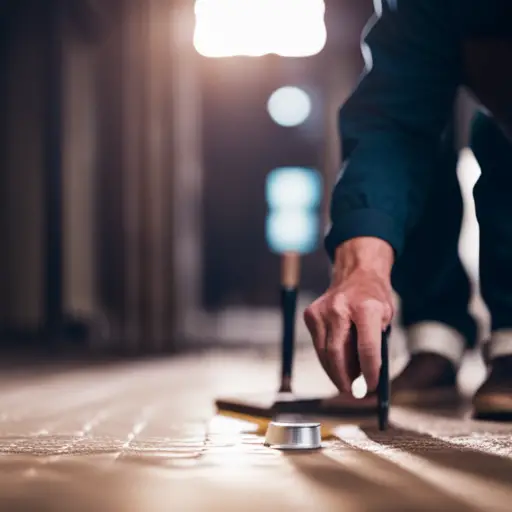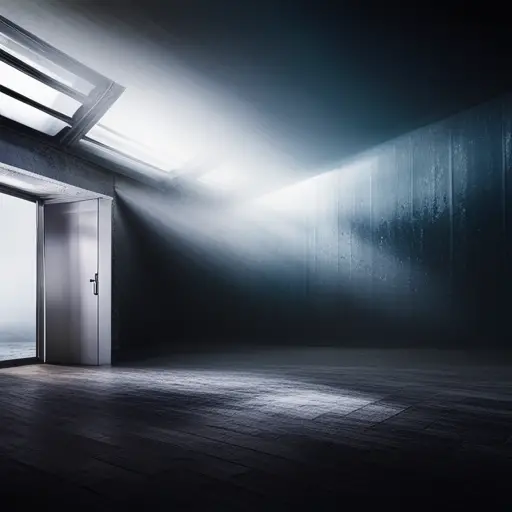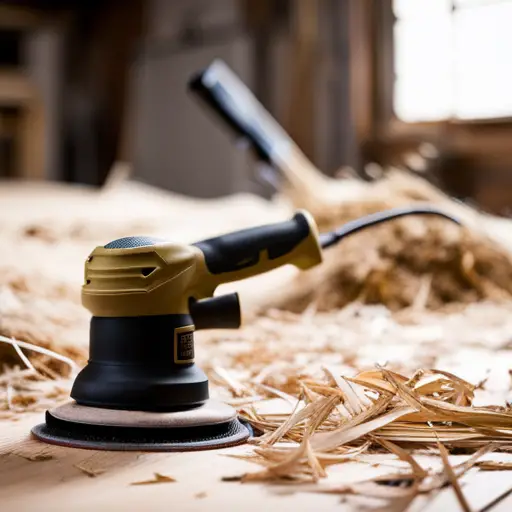The Dos and Don’ts of Floor Waxing

Like a well-oiled machine, a perfectly waxed floor exudes a polished and professional impression. In this comprehensive guide, we will explore the essential dos and don’ts of floor waxing.
From surface preparation to choosing the right wax and mastering application techniques, we will provide invaluable insights to ensure a flawless finish.
By delving into common mistakes, maintenance tips, and safety precautions, this article is a must-read for anyone seeking to elevate their floor care practices.
Preparing the Surface
The first step in preparing the surface for floor waxing is to thoroughly clean the entire area with a high-quality floor cleaner. Surface cleaning is crucial to ensure that the floor is free from any dirt, grime, or residues that could interfere with the wax adhesion. It is essential to pay attention to corners and edges, as these areas often accumulate more dirt and require extra care during the cleaning process.
Protective measures should be taken to avoid any accidents or damage during the cleaning process. This includes using caution signs to alert people of the wet floor, using non-slip mats to prevent slips and falls, and ensuring proper ventilation to avoid inhaling fumes from the cleaning products. Additionally, it is important to consider the type of flooring material and choose a compatible floor cleaner to prevent any damage.
Choosing the Right Wax
When choosing the right wax for floor maintenance, it is crucial to consider the specific type and condition of the flooring. Selecting products that are compatible with the flooring material is essential to achieve the best results. For example, for hardwood floors, it’s important to choose a wax specifically formulated for use on wood surfaces, while for vinyl or linoleum floors, selecting a wax designed for these materials is necessary.
Testing compatibility is also a crucial step before applying any wax to the entire floor. This can be done by applying a small amount of the chosen wax in an inconspicuous area and checking for any adverse reactions such as discoloration or damage to the floor.
Additionally, the condition of the floor should be taken into account when selecting the right wax. For heavily trafficked areas, a more durable wax may be required to provide adequate protection, while for lightly used areas, a standard wax may suffice.
Proper Application Techniques
When it comes to proper floor waxing, the key is to ensure an even application across the entire surface.
Over-waxing can lead to a buildup that is difficult to remove and can result in a dull, hazy appearance.
Using the right tools, such as a clean mop and applicator, is crucial for achieving a professional and polished finish.
Even Wax Application
For achieving an even wax application, it is crucial to employ smooth and consistent strokes with the applicator. This ensures that the wax is spread evenly across the floor surface, avoiding uneven buildup and streaks. Proper technique not only affects the aesthetics but also the durability and longevity of the floor finish. To emphasize the importance of smooth and consistent application, consider the following table:
| Key Points | Details |
|---|---|
| Even wax removal | Remove any excess wax buildup before applying a new coat to ensure an even application. |
| Glossy finish maintenance | Regularly buff the waxed floor to maintain a glossy finish and even sheen. |
| Application Tools | Use high-quality applicators to ensure an even distribution of wax. |
Avoid Over-Waxing Floors
To ensure proper floor waxing and avoid over-waxing, it is essential to employ precise and controlled application techniques that maintain the floor’s integrity.
Preventive measures should be taken to avoid over-waxing, as it can have detrimental long-term effects on the floor. Over-waxing can lead to a buildup of wax layers that not only diminish the floor’s appearance but also make it more challenging to maintain.
To prevent this, it is crucial to follow the recommended wax application guidelines provided by the manufacturer. Applying thin, even coats of wax and allowing sufficient drying time between applications is key to preventing over-waxing.
Additionally, regular maintenance and periodic stripping of old wax layers can help maintain the floor’s luster without causing damage from over-waxing.
Use Proper Tools
Employing proper tools and techniques for floor wax application is crucial for achieving a professional and long-lasting finish. Before waxing, ensure that the floor is properly cleaned to remove any dirt, debris, or old wax residue. Use a vacuum or broom to eliminate loose particles and then mop the floor with a mild detergent to remove any stubborn dirt.
Once the floor is clean and dry, select the appropriate tools for applying the wax. A microfiber mop or a wax applicator pad is ideal for smooth and even application, ensuring that the wax is spread evenly without excess buildup. Additionally, consider using floor protection such as furniture pads or mats to prevent scratches and scuff marks, maintaining the waxed floor’s pristine appearance.
Proper cleaning and floor protection are essential elements of the floor waxing process, contributing to a flawless and durable finish.
Maintenance Tips
When it comes to maintaining a waxed floor, a regular cleaning routine is essential to preserve its shine and protect it from damage.
Proper wax application is crucial for ensuring the longevity and effectiveness of the floor wax.
To further safeguard the floor, implementing preventive measures to avoid scratches, spills, and other forms of damage is advisable.
Regular Cleaning Routine
The regular cleaning routine for maintaining waxed floors is essential for preserving their appearance and longevity. To ensure the best results, consider the following maintenance tips:
-
Cleaning Products and Techniques: Use a neutral pH cleaner and a damp mop to remove dirt and grime without damaging the wax finish.
-
Frequency and Timing: Clean high-traffic areas daily and less frequented areas weekly to prevent dirt buildup and maintain the wax shine.
-
Spot Cleaning: Promptly address spills and stains to prevent them from seeping into the wax and causing damage.
-
Preventative Measures: Place doormats at entryways to reduce the amount of dirt and debris that can be tracked onto the waxed floors.
By following these maintenance tips, you can ensure that your waxed floors retain their luster and durability.
Now, let’s delve into the proper wax application process.
Proper Wax Application
To maintain the waxed floors’ luster and durability, it is essential to apply wax using proper maintenance tips for optimal results. When applying wax, ensure that it is spread evenly using a buffing technique to achieve a smooth and uniform finish. Additionally, it is crucial to follow the manufacturer’s guidelines for the appropriate drying time before buffing the waxed surface.
Moreover, regular wax removal is necessary to prevent the buildup of old, discolored wax layers. When removing wax, use appropriate wax removal products and techniques to avoid damaging the floor’s finish. By employing these maintenance tips, the floors will maintain their shine and protection.
Transitioning into the subsequent section about ‘preventive measures for damage’, it is also important to consider proactive steps to safeguard the waxed floors from potential harm.
Preventive Measures for Damage
How can proactive maintenance protect waxed floors from potential damage and extend their longevity?
Follow these essential maintenance tips to keep your waxed floors looking their best:
-
Regular Cleaning: Sweep or vacuum the floor to remove dirt and debris, and use a damp mop with a pH-neutral cleaner to maintain the wax and protect the hardwood.
-
Use Protective Pads: Place felt or rubber pads under furniture legs to prevent scratches and dents on the waxed surface.
-
Avoid Water Damage: Wipe up spills immediately to prevent water from seeping into the wood and causing damage to the wax finish.
-
Repairing Scratches: Address any scratches promptly by applying a thin layer of wax to the affected area to protect the hardwood from further damage.
Common Mistakes to Avoid
One common mistake to avoid when floor waxing is applying too thick of a coat, as this can lead to uneven drying and a streaky finish. Proper drying is essential for achieving a smooth and glossy floor surface. To ensure proper drying, it’s important to apply thin and even coats of wax. Avoiding excessive layers is crucial as it can prolong the drying time and result in an uneven appearance.
Another common mistake is failing to prepare the floor adequately before waxing. Properly cleaning and stripping the old wax, if applicable, is necessary to ensure that the new wax adheres effectively. Furthermore, not following the manufacturer’s instructions for the specific type of wax being used can lead to subpar results. It’s important to understand the recommended application methods and drying times for the wax being used.
Lastly, neglecting regular maintenance such as buffing and recoating can diminish the floor’s appearance and durability over time. Adhering to a consistent maintenance schedule is vital for preserving the quality of the waxed floor.
Safety Precautions
Safety is paramount when it comes to floor waxing, and proper handling and storage of waxing materials is essential to prevent accidents and ensure a safe work environment. To prioritize safety during floor waxing, consider the following precautions:
-
Handling chemicals:
- Always follow the manufacturer’s instructions for the proper handling and use of floor waxing chemicals.
- Ensure adequate ventilation in the workspace to minimize exposure to fumes and airborne particles.
-
Personal protective equipment:
- Utilize appropriate personal protective equipment, such as gloves, goggles, and masks, when working with floor waxing materials to prevent skin contact, eye irritation, and inhalation of potentially harmful substances.
-
Spills:
- Promptly clean up any spills or drips of wax or chemicals to prevent slips and falls.
- Use absorbent materials and appropriate cleaning agents to safely contain and remove any accidental spills.
-
Storage:
- Store floor waxing materials in a designated area away from heat sources and incompatible substances.
- Ensure that containers are tightly sealed and labeled correctly to avoid confusion and accidental misuse.
Frequently Asked Questions
Can I Use Floor Wax on All Types of Flooring, Including Hardwood, Laminate, and Vinyl?
Yes, you can use floor wax on hardwood, laminate, and vinyl, but it’s important to follow the appropriate waxing process and application tips. Benefits include protection and shine, but drawbacks may include buildup and potential slipperiness.
How Often Should I Strip and Rewax My Floors to Maintain a High Shine?
To maintain a high shine on your floors, consider the frequency of waxing. The best practice varies depending on factors such as foot traffic and floor type. High-quality waxing products can prolong the intervals between stripping and rewaxing.
Is It Safe to Use Floor Wax in Homes With Pets and Young Children?
When considering pet safety and childproofing in homes with young children and pets, it’s important to be cautious with floor waxing. Ensure proper ventilation during application and allow sufficient drying time to minimize potential risks.
Can I Use a Regular Mop to Apply Floor Wax, or Do I Need a Special Applicator?
Using a regular mop to apply floor wax is possible, but a special floor wax applicator may provide better results. Consider the type of flooring, such as hardwood, laminate, or vinyl, when choosing the applicator. Ensure proper stripping, rewaxing, and removal of excess floor wax for best results.
What Should I Do if I Accidentally Apply Too Much Wax to My Floors?
If too much wax is accidentally applied to floors, swift action is key. Removing excess wax promptly prevents uneven application and potential damage to the flooring. Follow proper removal techniques to maintain a polished finish.
Conclusion
In conclusion, proper floor waxing is essential for maintaining the appearance and longevity of your floors.
According to a study by the National Safety Council, slip and fall accidents account for over 8 million hospital emergency room visits each year, with floors being a common cause.
By following the dos and don’ts of floor waxing, you can ensure a safe, clean, and attractive environment for yourself and others.

Rubin Everest, a seasoned expert in the world of flooring, brings a wealth of knowledge and passion to the surface. As the mind behind ebbow.com, Rubin is dedicated to sharing insights on the latest trends, innovative solutions, and expert advice in the realm of flooring. Whether you’re seeking practical tips for installation or design inspiration, Rubin Everest is your go-to source for all things flooring-related, making your journey to the perfect floor an informed and enjoyable experience.





